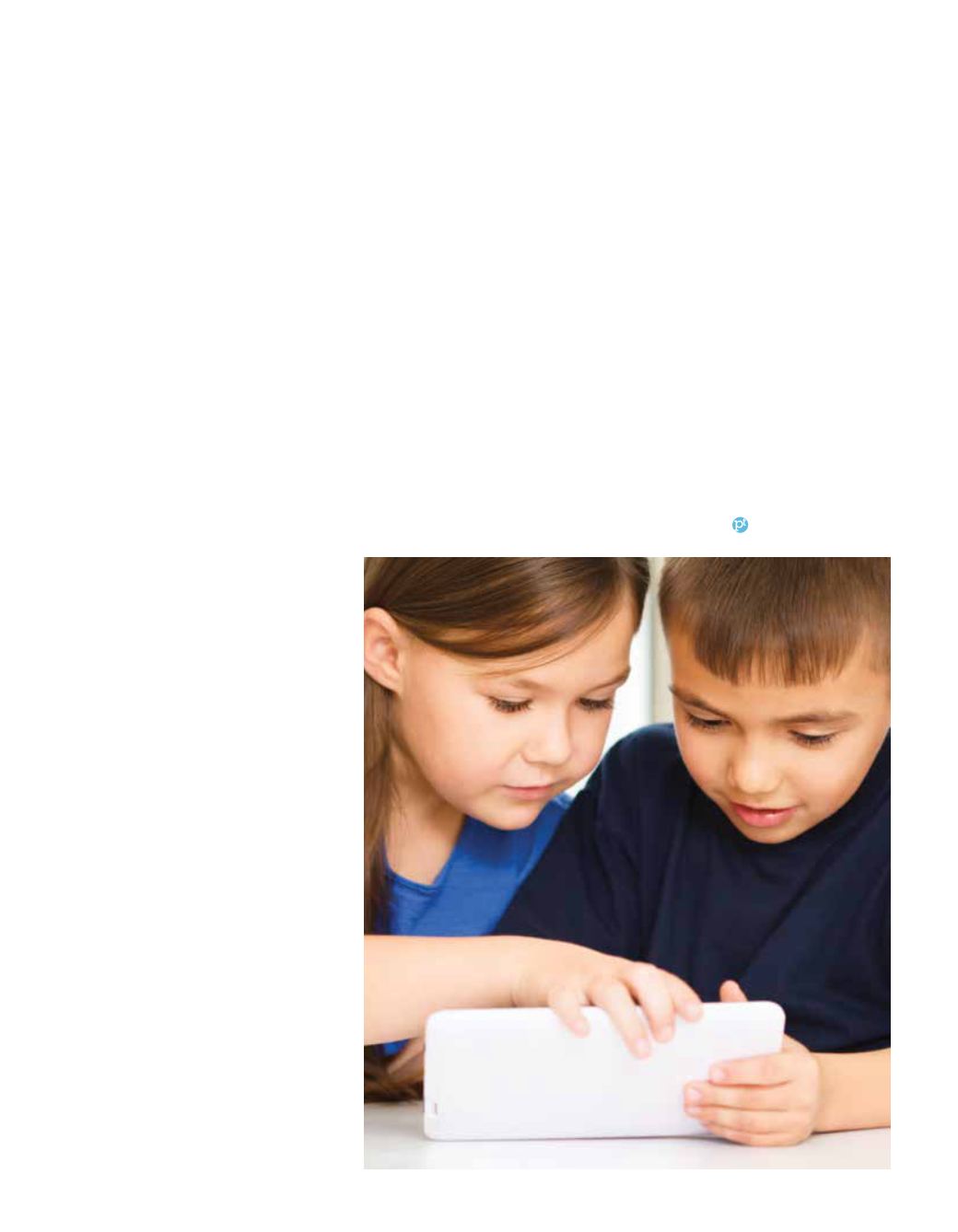
become wireless, so a child can attach
the device to his wheelchair and have
it with him at all times, making it
easier to integrate and participate in a
much wider variety of activities.
An app which is designed for
children with very limited speech and
movement is the Say Hi! AAC app for
iPad. Designed by the parents of a child
with spinal muscular atrophy, the app
lets a child ‘speak’ through the iPad
without ever touching the screen. The
app’s designers say, “Our hope is that
Say Hi AAC will open the world of
communication for those with severe
physical challenges.”
Teacher tools
New technologies, software and
apps now play a very large role in
all schools, but nowhere is this more
true than in special schools. One
special school that pioneers the use
of new technology is Paddock School
in London. Paddock’s pupils have
severe learning difficulties, and
many of them are on the autistic
spectrum. Head Sarah Santos
explains, “All teachers here embrace
technology and investigate ways to
personalise learning for each pupil.
Some of our students on the autistic
spectrum struggle with the social
elements of learning, so an iPad
gives them a chance to focus on new
skills with fewer distractions. As
with all new innovations, technology
is not a cure-all, but it can help
some children with additional needs
get one step closer to integrating
into society, and one step closer to
independence and autonomy.”
Classroom teachers at the school
make use of targeted technology to
help their students learn, but also to
help create the right environment
for learning to flourish. Teacher
Laura Agel uses Class Dojo to help
reinforce positive behaviour. Each
student has their own named avatar
on the SMART board, under which
any points they are awarded for good
behaviour are displayed. When they get
25 points, they get a present from the
present box. Laura says, “The students
get excited when their number gets
higher. It’s a great tool because it’s not
about being better than anyone else, it’s
about getting points for yourself.”
Many mainstream apps can
be surprisingly useful educational
experiences in classrooms where
children have special needs. Teacher
Jess Heaney uses apps to help her
reception and year one students
develop their concentration. “I use
the Koi Carp app, as it emulates the
water effect and sound, and water is
generally a very motivating sensory
experience for the children. When
children ‘touch’ the water, the fish swim
away, so it helps develop their concept
of cause and effect. I also use the Uzu
app, which is another cause-and-effect
app, where dots on the screen follow
your touch. I use this for children who
don’t have a long concentration span,
but understand they have the ability to
make marks.”
Get connected
There is no doubt that new technologies,
apps and software have helped many
children to connect to a world that has
often previously been out of reach.
Former CEO of Microsoft Steve
Ballmer said, “The number one benefit
of information technology is that it
empowers people to do what they want
to do. It lets people be creative. It lets
people be productive. It lets people
learn things they didn’t think they
could learn before, and so in a sense
it is all about potential.” With the
development of specialist technology
– and its opportunities for education,
entertainment and communication –
far more children will be able to realise
that potential.
April 2015
77


